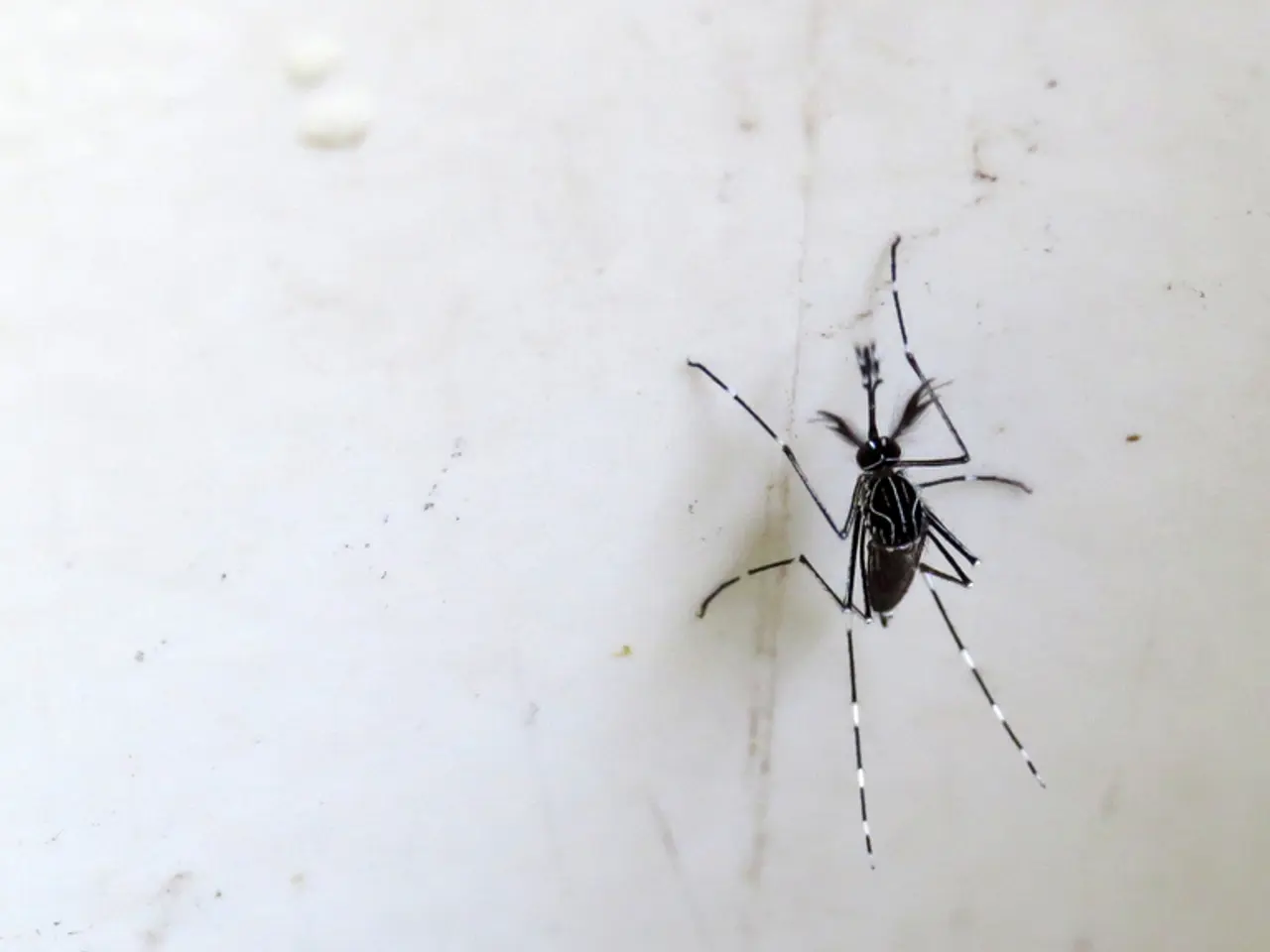Increased instances of dengue reported post typhoons
In recent weeks, the Philippines has seen a surge in dengue cases, with the Department of Health (DOH) reporting a total of 15,161 cases from July 20 to August 2, 2025. This number represents a 2% increase compared to the 14,909 cases reported from July 6 to 19, just before the typhoons Crising, Dante, and Emong hit[1][2].
Heavy rains brought by these typhoons and the southwest monsoon have created more breeding grounds for Aedes aegypti mosquitoes, the primary carriers of the dengue virus[1][2][3]. To prevent further increases, the DOH is urging the public to maintain clean surroundings, particularly focusing on areas where water can accumulate[1].
The DOH's advice emphasises the importance of adhering to the daily routine of "Taob, Taktak, Tuyo, at Takip," which involves emptying, scrubbing, drying, and covering water-holding containers to eliminate mosquito larvae[1]. Additionally, the public is encouraged to dry out water containers and keep them clean to discourage mosquito breeding[1].
The DOH also advises seeking immediate medical care if dengue symptoms appear, which include prolonged fever, rashes, body aches, muscle and eye pain, dizziness, and vomiting[1]. To ensure prompt medical attention for dengue patients, Dengue Fast Lanes in hospitals remain operational[1][2].
Current monitoring remains heightened as trending weather patterns and a low-pressure area continue to sustain conducive conditions for mosquito breeding and potential dengue spread[1][2]. Localised data show significant case counts, such as Quezon City recording 6,872 dengue cases from January to mid-August 2025, indicating that urban centres continue to be heavily affected[4].
The DOH's advice is aimed at reducing the risk of dengue transmission. Dengue is a viral infection that is spread to humans through mosquito bites. Aedes aegypti mosquitoes, which can be found in water containers, are the primary carriers of the dengue virus[5].
In conclusion, the dengue situation post-typhoons in 2025 is actively monitored, preventive clean-up campaigns are strongly promoted, and health facilities remain vigilant to manage expected case surges. The public is encouraged to take proactive measures to prevent the breeding of Aedes aegypti mosquitoes and seek medical attention if dengue symptoms appear.
[1] Department of Health (DOH), Press Release, August 3, 2025. [2] Rappler, "Dengue cases surge after July typhoons," August 16, 2025. [3] World Health Organization (WHO), "Dengue and Climate Change," 2020. [4] Manila Standard, "Quezon City leads in dengue cases," August 10, 2025. [5] Centers for Disease Control and Prevention (CDC), "Dengue," 2020.
- Due to the surge in dengue cases in the Philippines post-typhoons, the Department of Health (DOH) encourages the public to maintain clean surroundings, particularly focusing on areas where water can accumulate to prevent further increases, following the routine of "Taob, Taktak, Tuyo, at Takip."
- As the Philippines continues to experience trending weather patterns and a low-pressure area, the DOH cautions that these conditions are conducive for mosquito breeding and potential dengue spread, emphasizing the importance of adhering to preventive measures.
- In light of the active dengue monitoring and the ongoing threat of a surge in cases, the DOH provides guidance for the public, including seeking immediate medical care if dengue symptoms appear and keeping water containers clean to discourage mosquito breeding.




